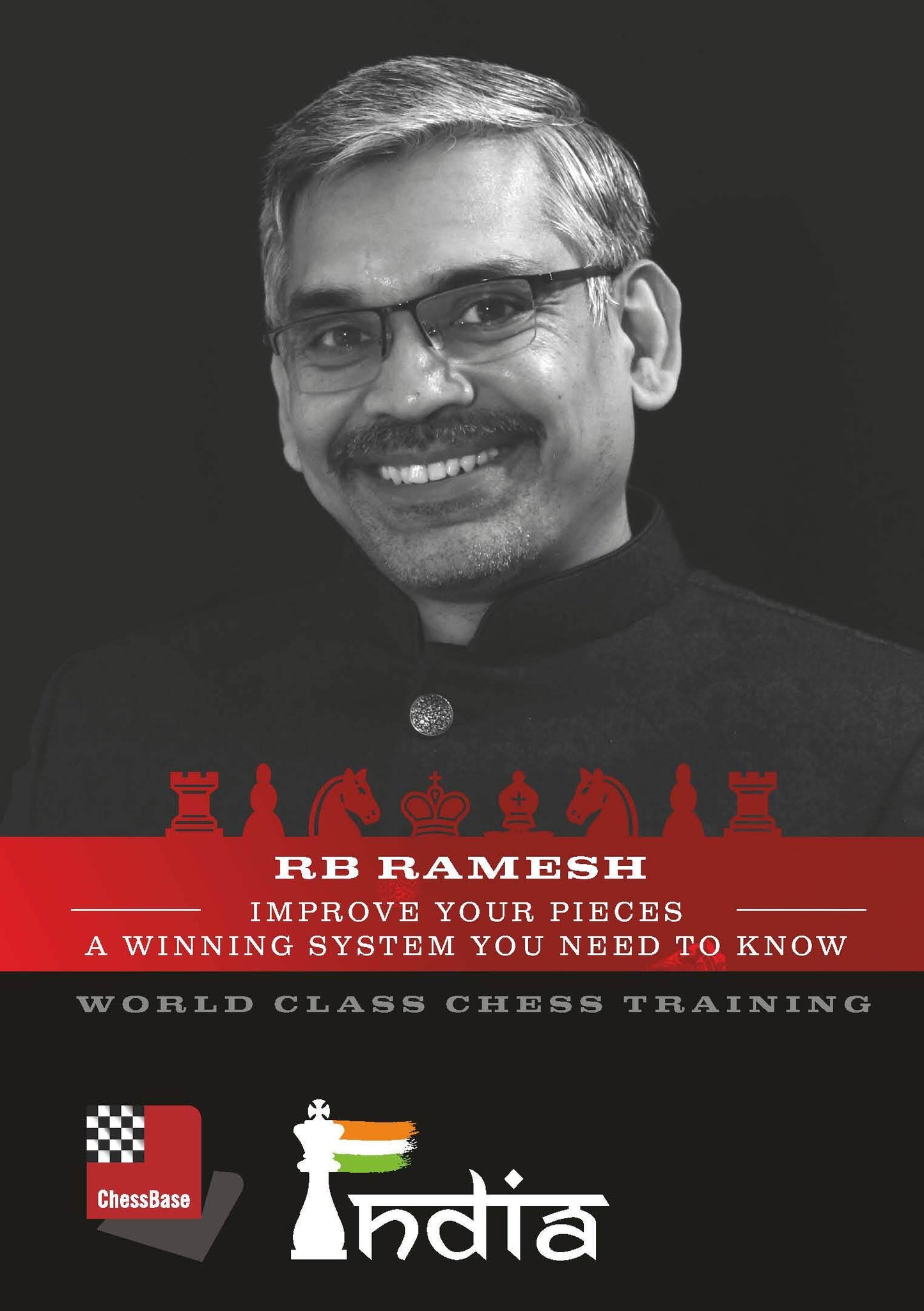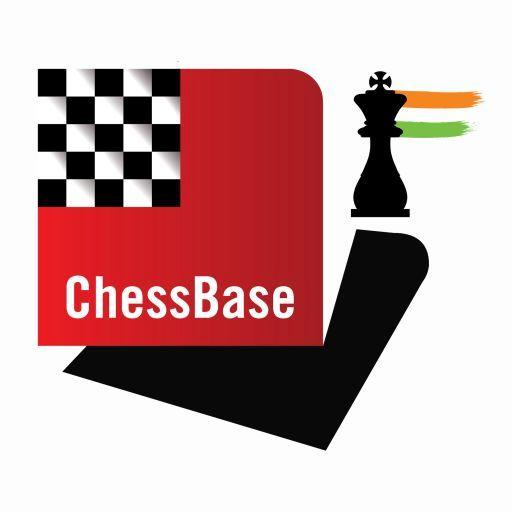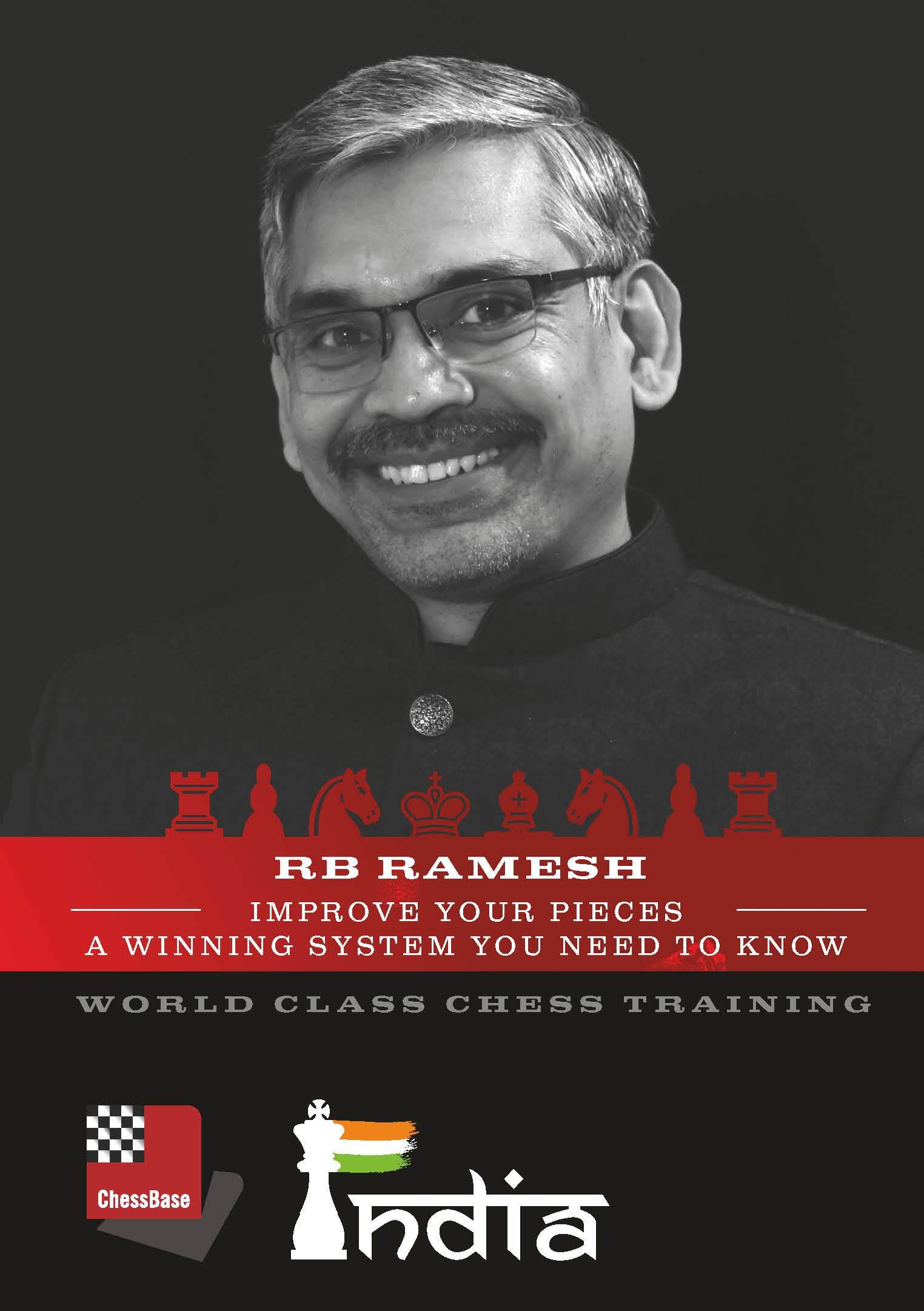Improve your pieces - a winning system you need to know by RB Ramesh
Improve your pieces - a winning system you need to know by RB Ramesh
Couldn't load pickup availability
Improve your pieces - a winning system you need to know by RB Ramesh
One of the most effective ways to improve your chess understanding is to know where your pieces belong and how to adapt when the board situation changes. When there’s no forced tactics, one must formulate a plan for what to do. Instead of looking for a win or advantage, it’s often easier to identify a piece that can improve its position and function. Even improving your worst piece is a simple concept that avoids assessment insecurity.
- Video running time: More than 4 hours (English)
- Instructive examples
- Extra: Database with exercises & Training with ChessBase apps – Play key positions against Fritz on various levels
- Fritztrainer App for Windows and Mac
- Available as download
- Video course with a running time of approx. 4-8 hrs.
- Repertoire database: save and integrate Fritztrainer games into your own repertoire (in WebApp Opening or in ChessBase)
- Interactive exercises with video feedback: the authors present exercises and key positions, the user has to enter the solution. With video feedback (also on mistakes) and further explanations.
- Sample games as a ChessBase database.
- New: many Fritztrainer now also available as stream in the ChessBase video portal!
- Videos can run in the Fritztrainer app or in the ChessBase program with board graphics, notation and a large function bar
- Analysis engine can be switched on at any time
- Video pause for manual navigation and analysis in game notation
- Input of your own variations, engine analysis, with storage in the game
- Learn variations: view specific lines in the ChessBase WebApp Opening with autoplay, memorize variations and practise transformation (initial position - final position).
- Active opening training: selected opening positions are transferred to the ChessBase WebApp Fritz-online. In a match against Fritz you test your new knowledge and actively play the new opening.
Even more possibilities: Start FritzTrainer in the ChessBase program!
- The database with all games and analyses can be opened directly.
- Games can be easily added to the opening reference.
- Direct evaluation with game reference, games can be replayed on the analysis board
- Your own variations are saved and can be added to the own repertoire
- Replay training
- LiveBook active
- All engines installed in ChessBase can be started for the analysis
- Assisted Analysis
- Print notation and diagrams (for worksheets)
Sample video
Contents
- Introduction
- Identifying passive pieces
- Themes
- Piece Play: Example 1 - Renet vs Jussopow
- Dynamic vs static positions: Example 2 - Karpov vs Schauwecker
- Compare and evaluate: Example 3 - Kasparov vs Huebner
- Improving a good-looking piece: Example 4 - Klimov vs Fominyh
- Activity of the pieces: Example 5 - Miton vs Bulski
- Multiple ideas: Example 6 - Kindermann vs Tatai
- Identify the worst piece: Example 7 - Short vs Vaganian
- The jobless piece: Example 8 - Adams vs Bacrot
- Playing on colours: Example 9 - Salgado Lopez vs Caruana
- Quiet moves: Example 10 - Karpov vs Spassky
- The hidden moves: Example 11 - So vs Heine Nielsen
- Dominant piece play: Example 12 - Petrosian vs Gulko
- Finding resources: Example 13 - Giri vs Tomashevsky
- The art of focusing our pieces: Example 14 - Garcia Martinez vs Pigusov
- Conclusion
- Practice Positions
- Description
- Position 1: Vidit vs Roiz, 2018
- Position 2: Kasparov vs Beliavsky, 1983
- Position 3: Tkachiev vs Ivanov, 2014
- Position 4: Wang Hao vs Caruana, 2013
- Position 5: Nakamura vs Gelfand, 2012
- Position 6: Carlsen vs Mamedyarov, 2014
- Position 7: Morozevich vs Shirov, 1999
- Position 8: Korchnoi vs Hamann, 1978
- Position 9: Polugaevsky vs Petrosian, 1981
- Position 10: Nevednichy vs Sideif Sade, 1979
- Bonus
- Analysis
- Exercises
System requirements: Minimum: Pentium III 1 GHz, 1 GB RAM, Windows 8.1 DirectX9 graphic card with 256 MB RAM, Windows Media Player 9 and internet connection for program activation. Recommended: PC Intel Core i7, 2.8 GHz, 4 GB RAM, Windows 10/11, DirectX10 graphic card (or compatible) with 512 MB RAM or better, 100% DirectX10 compatible sound card, Windows Media Player 11 and internet connection for program activation.
Information regarding product delivery
Information regarding product delivery
*Pre-ordered digital products will be delivered by email on the launch date of that product.
Digital Products (Softwares, Magazines, etc)
All digital products are delivered instantly. Once your payment is successfully processed, you will receive the following instantly via email:
- Serial key
- Setup files
- Installation procedure
Please ensure you provide the correct email address during checkout, as the serial key and files will be sent to that email address instantly upon successful payment.
Physical Products (Books, Chess Sets, etc)
These will be shipped to your address via third-party courier partners.
We dispatch all orders (except customised t-shirts) within 1-2 days. Orders placed on weekends and holidays may take 1-2 additional days to ship, as we do not operate on these days.
Delivery timelines are as follows:
- Standard Delivery (India): 7–10 working days
- Express Delivery (India): 2–5 working days
- International Shipping: Estimated 2 weeks (may vary based on destination and customs)
You will receive a tracking link via email once your order is dispatched.
Regarding MacOS compatibility for softwares
Regarding MacOS compatibility for softwares
Although not officially supported on Mac, there is a workaround that people find helpful. You can check it here.
Important note for international customers
Important note for international customers
We sell digital products (softwares) and most of our physical products only in the following 11 countries:
India, Bangladesh, Nepal, Bhutan, Maldives, Sri Lanka, Thailand, Indonesia, Pakistan, Malaysia, Philippines.
If you do not belong to any of these countries, you can still buy some high-quality products that we ship worldwide. Please check those out here.
- Trusted Since 2016
- Premium Quality
- Free Delivery
Share



